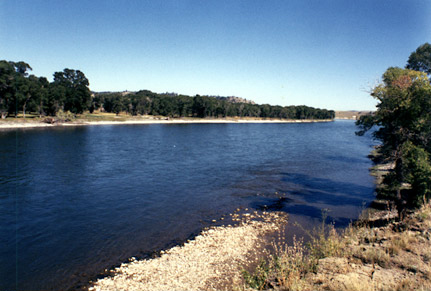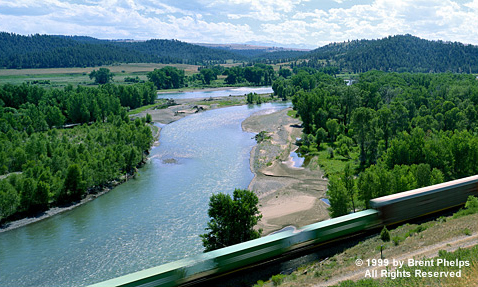The chapter of knowledge is very short, but the chapter of accidents is a very long one.
Indian Fort
On 17 July 1806 Clark wrote:
I Saw in one of those Small bottoms which I passed this evening an Indian fort which appears to have been built last Summer. This fort was built of logs and bark. The logs was put up very Closely, capping on each other about 5 feet high, and Closely chinked, around which bark was Set up on end so as to Cover the Logs. The enterance was also guarded by a work on each Side of it and faceing the river. This work is about 50 feet Diameter & nearly round. The Squaw informs me that when the war parties [Nicholas Biddle: of Minnit[ares]s Crows &, who fight Shoshonees] find themselves pursued they make those forts to defend themselves in from the pursuers whose Superior numbers might other wise over power them and cut them off without receiveing much injurey on hors back &c.
The site is believed to have been opposite today’s Reed Point, a small community that began as a market terminal for dryland farmers on the Northern Pacific Railway about 1900, and faded almost to oblivion during the drought of the late ‘teens. The array of large cottonwood trees in the above photograph evidently wasn’t there in 1806, for Clark had to walk downriver another 35 to 40 miles before finding any large enough to provide serviceable dugout canoes.
Charbonneau’s Accident
Clark’s journal for 18 July 1806, contained another entry in Lewis’s handy “chapter of accidents.” To begin with:
Shabono was thrown from his horse to day in pursute of a Buffaloe, the ho[r]se unfortunately Steping into a Braroe [badger] hole, fell and threw him over his head. He is a good deel brused on his hip Sholder & face.
It could have been much worse, for, as Clark pointed out, the country was rugged and stony, and covered with prickly pear cactus. But then, something appeared that must have raised the general stress level considerably:
At 11 A. M. I observed a Smoke rise to the s. S. E in the plains towards the termonation of the rocky mountains in that direction . . . . This smoke must be raisd. by the Crow Indians in that direction as a Signal for us, or other bands. I think it most probable that they have discovered our trail and takeing us to be Shoshone &c. in Serch of them the Crow Indians to trade as is their Custom have made this Smoke to Shew where they are—or otherwise takeing us to be their enemy made this Signal for other bands to be on their guard.
A decent meal would have helped, but as luck would have it:
Shields killed a Buffalow this evening which Caused me to halt sooner than Common to Save Some of the flesh which was So rank and Strong that we took but very little.
Gibson’s Accident
Private George Gibson climaxed the day’s misadventures by impaling himself on the stub of a branch on a dead and downed tree, suffering injuries to a knee, hip and thigh that were serious enough to put him out of commission for the next twelve days:[1]The accident was commemorated by Clark on his 1814 map with the naming of “Thy snag’d Creek,” today’s Upper Deer Creek, which he and his contingent actually passed on the … Continue reading
Gibson in attempting to mount his horse after Shooting a deer this evening fell on a Snag and sent it nearly [two] inches into the Muskeler part of his thy. He informs me this Snag was about 1 inch in diamuter burnt at the end. This is a very bad wound and pains him exceedingly. I dressed the wound.
Clark must have been wakeful much of that night, worrying about the implications of Gibson’s misfortune for their timely return to the “U States” before the onset of winter.
The very next day, 19 July 1806, Toussaint Charbonneau reported seeing an Indian on the high lands south of the river. Then Clark himself saw smoke in the mountains, in the same direction he had noticed it on the 18th.
There were more sleepless nights to come. The Crow Indians were watching them.
Notes
| ↑1 | The accident was commemorated by Clark on his 1814 map with the naming of “Thy snag’d Creek,” today’s Upper Deer Creek, which he and his contingent actually passed on the 17th, the day before the accident occurred. |
|---|


